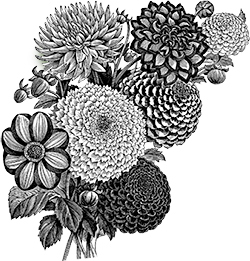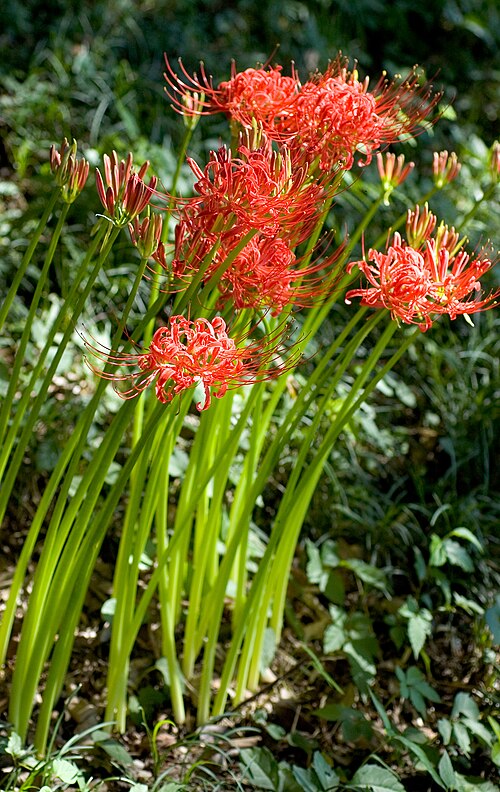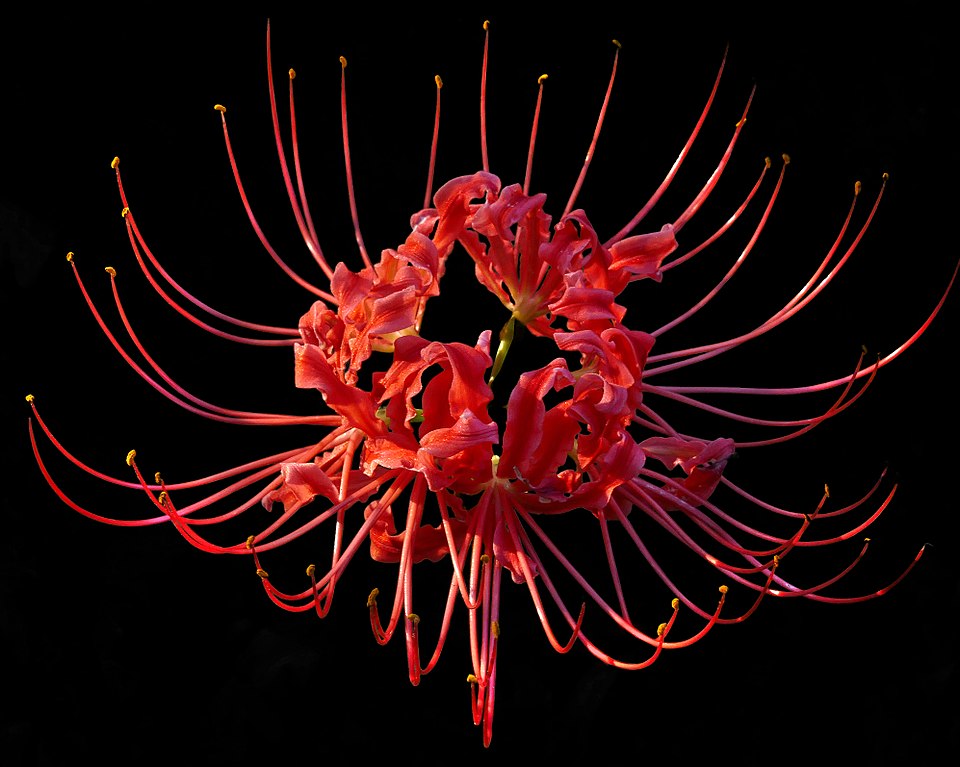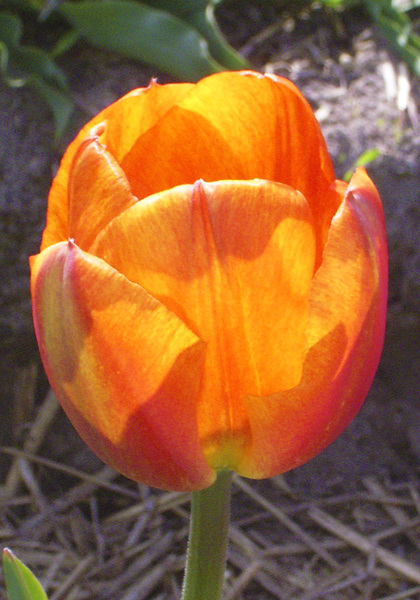|
“Each moment of the year has its own beauty, a picture which was never seen before, and which shall never be seen again.”
– Ralph Waldo Emerson, American philosopher, essayist, lecturer, and poet, 1803-1882
|
Savoring the Last Days of Summer
The children are back in school, the nights are getting cooler, and the dahlias are blooming, but we’re determined to take advantage of whatever summer weather is left for us! We wrapped up shipping iris and daylilies last month (thanks for all of your orders!) and have completed planting divisions for next year’s crops. We’ve had a chance to catch our collective breath, take that weekend away we’d been dreaming of, and to admire the results of our spring and summer efforts. We hope you’ve had a chance this summer to connect with friends and family, to enjoy the discoveries of travel or the delights of your backyard, and that your gardens are full of birds, bees, and beauty!
|
Here Come the Fall Bulbs!
|
|
|
We’re happy to report that our many crates of tulips, daffodils, and other bulbs from Holland will shortly be on their ship crossing the Atlantic to us. As soon as they arrive, we will begin shipping them to you, beginning with customers in extremely cold zones and then the customers who ordered last winter. If we have your order now, we will have it to you by the end of October, a perfect time for most gardeners to plant. But don’t worry – your bulbs will come with directions on when different varieties need to be planted and how best to store them if you can’t plant immediately.
Sometimes we’ll hear from customers who see that the big box stores already have fall bulbs for sale, and ask why we don’t ship ours sooner. Mainly because it’s better for the bulbs. All bulbs have to mature and dry after harvesting, especially daffodils, which need to lose over 20% of their weight in moisture – and this takes time. But big box stores want to sell as many bulbs as possible before they start ramping up for Halloween, so mainstream growers have been forced to ship bulbs before they’re ready. Sometimes it works, sometimes it doesn’t – and we don’t want to take that risk with our rare jewels.
We hope you understand, and thanks for your patience!
|
How Do Red Spider Lilies Know It’s Fall?
|
|
|
|
“It’s the first great mystery of fall,” our long-time friend Bill Finch of the Mobile Press-Register wrote years ago, “and even after watching it happen for nearly 50 years, I can’t get over it: The naked flowers of the lycoris, the red spider lilies, emerging from the weeds of summer. Doesn’t it worry you in the way it worries me? How do they know, with such absolute certainty year after year, that it’s the first of September, and the great wheel of the seasons is slowly but inexorably turning toward fall?
“We both can imagine what drives the daffodils and azaleas to bloom in the spring – the lengthening days, the rapid warming of the ground under our feet. But what is the signal for lycoris in September, when the ground still blisters your bare feet as it did in July, and the reservoir of summer warmth only makes the longer nights hotter longer? The lycoris sense something in the change of season that I don’t have the sense to quantify, a change I’m never willing to believe, until I see the naked flower stems shoot up, reminding me that all my plans for fall are weeks behind.”
Have you noticed your own spider lilies blooming earlier or later this year, and what do you think influences them? They don’t overwinter here in our zone 6 gardens, and we’d love to hear about your experiences with them.
|
The Dutch Royal Family During WWII and Their Tulip Legacies
|
|
|
|
We’re able to offer two historic varieties that commemorate the women who helped lead the people of the Netherlands through the past century and in particular through the years of the Second World War. ‘Konigin Wilhelmina’, first offered sixty years ago, honors Queen Wilhelmina. The longest-reigning Dutch monarch thus far, being crowned in 1890 and serving through 1948. After several miscarriages, her daughter Juliana was born in 1909. In 1940 the German invasion of the Netherlands prompted the Queen and Princess to seek refuge in Great Britain, where Queen Wilhlemina led her government-in-exile and spoke often to her people in late-night radio broadcasts, rallying their spirits during the Occupation and becoming a symbol of Dutch resistance. She and her family returned to the Netherlands in 1945, and she traveled around the countryside, sometimes on a bicycle, to keep up morale as the country rebuilt. Ill health prompted her to abdicate in 1948 at the age of 68 and her daughter Juliana became queen. Wilhelmina Bay in Antarctica was named for her, as was Wilhelmina State Park in Arkansas, and if you’re ever in San Francisco in March, you can visit the Queen Wilhelmina Garden in Golden Gate park where tulips donated by the Dutch will be blooming. We’re glad to have the fragrant, orange-red tulip named for her in 1965 available for the first time for you to add to your own garden.
‘Princess Juliana’, a lovely scarlet-red late tulip, was introduced in 1909 honoring the first child of Queen Wilhemina. She received her Bachelor's degree in European law in 1930 and married in 1936. When the Netherlands was invaded in 1940, Princess Juliana, her husband, and her daughters Beatrix (aged 2) and baby Irene all accompanied Queen Wilhelmina to Great Britain. After a month there, she and the girls found greater safety in Ottawa, Canada, where they remained for the duration of the war and where her third daughter Margriet was born. Upon her return home in 1945 Princess Juliana sent the City of Ottawa 100,000 tulip bulbs in gratitude for their hospitality and for the thousands of Canadian soldiers who died in 1944 and 1945 fighting to free her country. In 1946, she sent more tulip bulbs and promised that she’d give tulips each year for as long as she lived. This was the start of the annual Canadian tulip festival held in Ottawa each spring since then. This May’s celebration marked the 80th year of what has become the largest public garden tulip display on Earth, with the current gift now being over a million bulbs.
Both of these women led their countries through turbulent times and continue to be celebrated through tulips, and we’re happy we’re finally able to offer these very rare varieties!
|
Did You Move Over the Summer? Tell Us ASAP.
|
|
|
If so, please let us know your new shipping address – we’d hate for the bulbs you’re eagerly anticipating end up sitting forlorn at your former residence or returned to us as undeliverable! If you know you’ll be traveling in October, please tell us what dates you’ll be away so that we can ship your bulbs to arrive either before you leave or after you return – unless of course you have a friendly neighbor collecting your mail while you’re gone!
|
Lucy Bellamy Celebrates the Diversity of Bulbs in A Year in Bloom, part 2
|
|
|
|
In last month’s newsletter we traveled through the early spring with Lucy Bellamy, and we now move into mid-spring, when daffodils take center stage..`She recommends ‘Bath’s Flame’, calling it a “Pale lemon daffodil, with a pretty twist to its outer petals and a small, straw-yellow cup with an orange lip…Over recent years there has been a trend for more delicate forms of narcissus that sit easily in semi-wild plantings, and ‘Bath’s Flame’ is at once just wild and just cultivated enough.” She also has praise for ‘White Lady’, “a firmly established favourite…a heritage cultivar bred for the [British] cut-flower trade in the 1890s, the flowers are delicate in scale and full of scent.”
Many gardeners value daffodils not only for their cheerful colors but also for their unattractiveness to deer and rabbits, which makes them great choices for naturalizing, planting them in the landscape and then leaving them alone to multiply underground. Bellamy says to look for varieties with “narrow foliage that is easily lost among grass after flowering” and suggests some older varieties close to their native roots : bright yellow N. obvallaris, the Tenby daffodil and white N. poeticus ‘Recurvus’, the pheasant’s eye daffodil
She also admires ‘Lucifer’ for “pairing simplicity of form with the robustness of a modern hybrid, saying it’s "beguiling" with a “light, diaphanous air that sits easily as part of a semi-wild planting”and ‘Thalia’ which is “lovely studded among more brashly yellow daffodils to add depth and leaven their colour” and “has a lovely elegant scent.”
In late spring she looks forward to the arrival of the windflowers, Anemone blanda, “a member of the buttercup family that demonstrates its strength by spreading swiftly, making it a great choice for naturalized plantings. Myriad blue daisy-like flowers…straighten their stems and open wide in the warmth of the early sun” but earned their common name because the flowers “turn their faces away from the wind and close up on overcast days.”
Another lesser-known recommendation: “The chequered flowers of Fritillaria meleagris, [the snake’s-head fritillary] capture the imagination, crooking their necks in readiness to open in late spring. It has “light and graceful foliage” making it “a useful bulb for damp soil, including in grass as part of a meadow.” And last but not least, “It’s also a magnet for bees and other pollinators.”
We were happy to see a whole two-page spread devoted to one of our favorite tulips, ‘Black Parrot’! She quotes British gardener and writer Arthur Parkinson, “If I had to plant just one tulip, it would be this one…It is the best of the velvets.” He especially likes pairing it with fragrant ‘Prinses Irene’ which we think is a glorious choice.
Late spring is highlighted by the English Florist’s tulips, whose pedigree” can be traced back to the first flowers grown by British gardeners John Evelyn and John Rea in the seventeenth century.” “Since 1836 these exquisite tulips have been grown and shown by members of the Wakefield and North of England Tulip Society” at whose annual meetings “they are staged in the traditional way, in brown beer bottles, to best display the detail of their flowers.’ Among them is the classic ‘Mabel’ from 1856, “flamed with deep rose markings on a white background.” Interestingly, she follows those up with modern Rembrandt tulips including ‘Estella Rijnveld’, “swirled in white and red” and boldly dramatic where ‘Mabel’ is more subtle. “Modern” is relative, of course – in this case ‘Estella” comes from 1954, almost a century after ‘Mabel’ and an “antique” in our eyes, being over seventy herself!
If you’d like to read more, or to get lost in the many photographs of English gardens and estates, look for “A Year in Bloom” by Lucy Bellamy – or put it on your birthday wishlist!
|
To Make Sure Our Newsletter Reaches You Safely . . .
|
|
|
Please add newsletter@oldhousegardens.com to your email address book or safe/approved list today.
|
To Unsubscribe
|
|
|
We hope you enjoy our monthly Gazette, but if not UNSUBSCRIBE here and we’ll drop you from our list immediately.
|
|



























